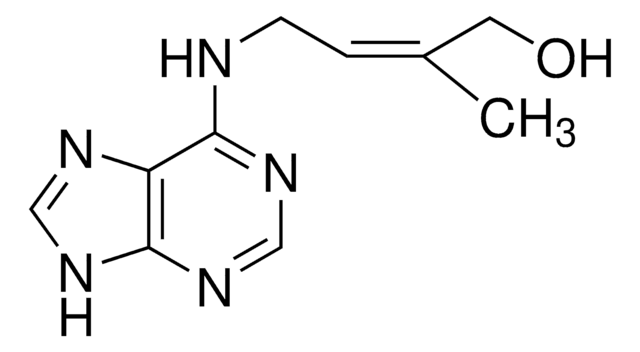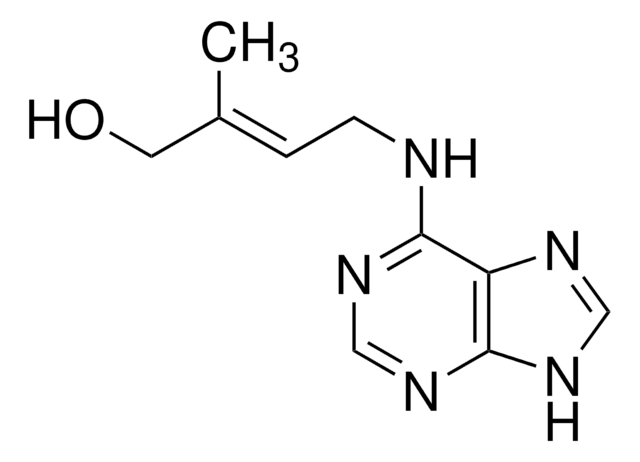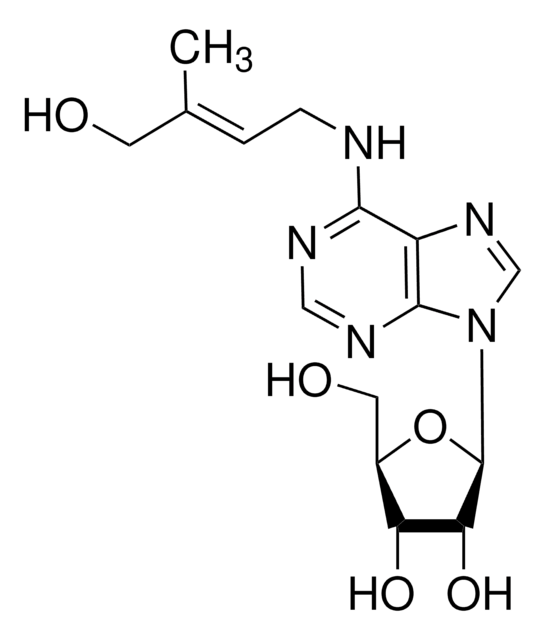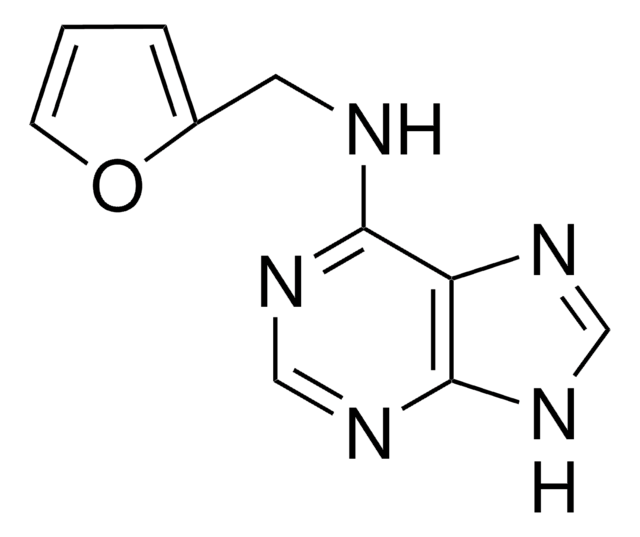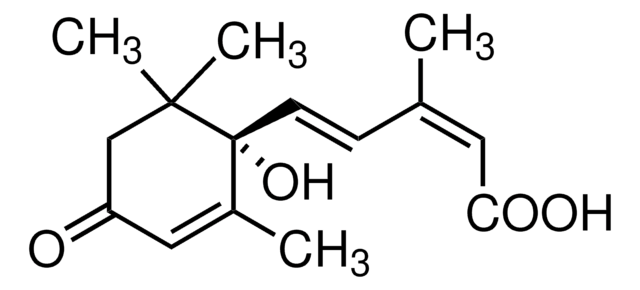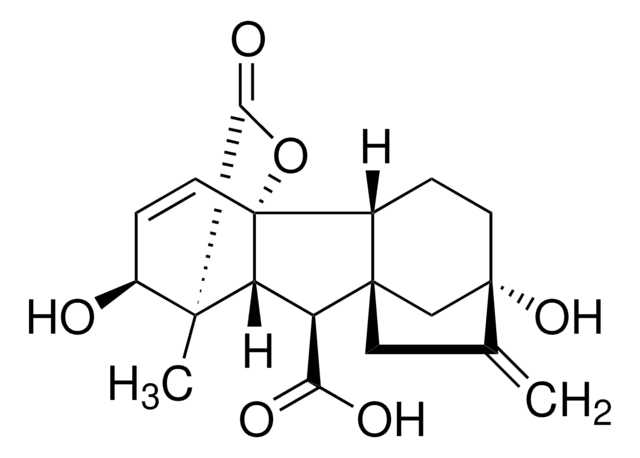Alle Fotos(1)
Wichtige Dokumente
08535
DL-Dihydrozeatin
≥98.0% (HPLC)
Anmeldenzur Ansicht organisationsspezifischer und vertraglich vereinbarter Preise
Alle Fotos(1)
About This Item
Empirische Formel (Hill-System):
C10H15N5O
CAS-Nummer:
Molekulargewicht:
221.26
Beilstein:
1215977
MDL-Nummer:
UNSPSC-Code:
12352202
PubChem Substanz-ID:
NACRES:
NA.32
Assay:
≥98.0% (HPLC)
Empfohlene Produkte
Qualitätsniveau
Assay
≥98.0% (HPLC)
Lagertemp.
2-8°C
SMILES String
CC(CO)CCNc1ncnc2nc[nH]c12
CC(CO)CCNc1ncnc2nc[nH]c12
InChI
1S/C10H15N5O/c1-7(4-16)2-3-11-9-8-10(13-5-12-8)15-6-14-9/h5-7,16H,2-4H2,1H3,(H2,11,12,13,14,15)
InChIKey
XXFACTAYGKKOQB-UHFFFAOYSA-N
Suchen Sie nach ähnlichen Produkten? Aufrufen Leitfaden zum Produktvergleich
Biochem./physiol. Wirkung
DL-Dihydrozeatin can be converted into zeatin by the enzyme zeatin reductase. It has been identified as a plant growth cytokinin that stimulates flower bud formation.
Metabolite in zeatin biosynthesis, metabolism in radish seedlings, conversion of Zeatin to Dihydrozeatin in Phaseolus Embryos.
Verpackung
Bottomless glass bottle. Contents are inside inserted fused cone.
Hier finden Sie alle aktuellen Versionen:
Besitzen Sie dieses Produkt bereits?
In der Dokumentenbibliothek finden Sie die Dokumentation zu den Produkten, die Sie kürzlich erworben haben.
Kunden haben sich ebenfalls angesehen
An Enzyme Mediating the Conversion of Zeatin to Dihydrozeatin in Phaseolus Embryos
Martin, R.
Plant Physiology, 89, 1630-1635 (1990)
Rohit Joshi et al.
Plant, cell & environment, 41(5), 936-946 (2017-03-25)
Cytokinins play a significant role in determining grain yield in plants. Cytokinin oxidases catalyse irreversible degradation of cytokinins and hence modulate cellular cytokinin levels. Here, we studied the role of an inflorescence meristem-specific rice cytokinin oxidase - OsCKX2 - in
R C Martin et al.
Plant physiology, 90(4), 1630-1635 (1989-08-01)
A reductase catalyzing the conversion of zeatin to dihydrozeatin was detected in soluble fractions of immature Phaseolus vulgaris embryos. The enzyme was partially purified by ammonium sulfate fractionation and affinity, gel filtration, and anion exchange chromatography. NADPH was the only
W M Van der Krieken et al.
Plant physiology, 92(3), 565-569 (1990-03-01)
Explants from flower stalks of Nicotiana tabacum L. were cultured on different cytokinins to induce flower bud formation. All cytokinins tested except zeatin and zeatin-riboside induced the same maximal number of flower buds. Benzyladenine, benzyladenosine, and dihydrozeatin were the most
Dihydrozeatin metabolism in radish seedlings.
McGaw, B. A.
Phytochemistry, 23, 1373-1377 (1984)
Unser Team von Wissenschaftlern verfügt über Erfahrung in allen Forschungsbereichen einschließlich Life Science, Materialwissenschaften, chemischer Synthese, Chromatographie, Analytik und vielen mehr..
Setzen Sie sich mit dem technischen Dienst in Verbindung.